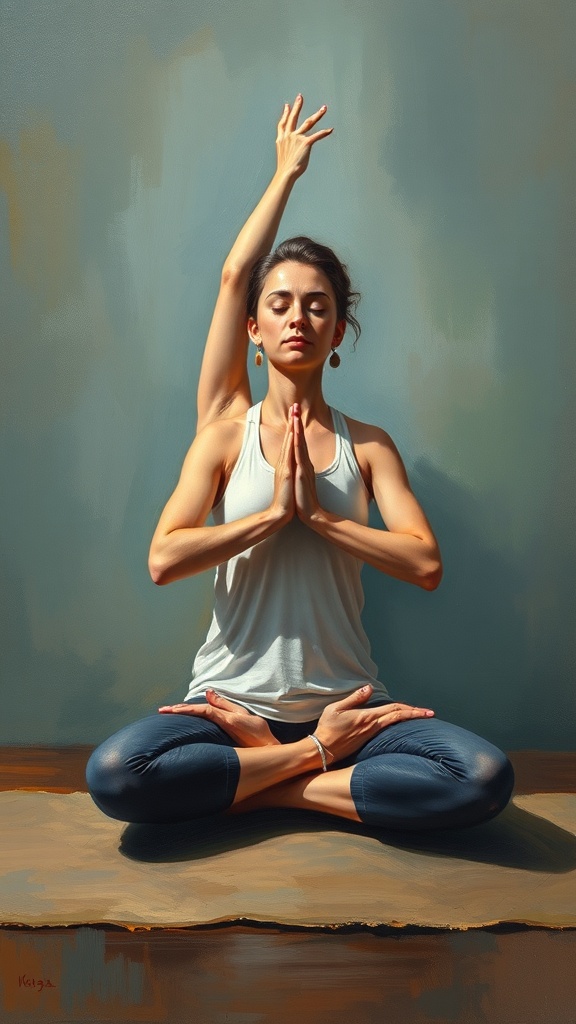Yoga for Busy Lives: A 20-Minute Routine to Reduce Stress and Improve Sleep

Finding time for self-care feels harder than ever, but a short, consistent yoga practice can deliver measurable benefits for stress, sleep, and overall resilience. This accessible 20-minute routine focuses on calming the nervous system, releasing neck and shoulder tension, and priming the body for restorative sleep — no fancy equipment needed.
How it helps
– Lowers stress hormones and activates the parasympathetic nervous system through slow movement and mindful breathing.
– Releases physical tension that builds up from long hours at a desk or device use.
– Improves sleep quality by signaling to the body that it’s time to wind down.
– Enhances body awareness and mental clarity when practiced regularly.
Quick prep
– Find a quiet, dimly lit space at home. A yoga mat or carpet is fine.
– Optional: bolster or firm pillow, blanket, and an eye mask for deep relaxation.
– Wear comfortable clothes and set a gentle timer for 20–25 minutes.
20-minute routine (beginner-friendly)
1. Centering and breath (3 minutes)
Sit cross-legged or on a chair. Close your eyes and lengthen the spine. Practice a calming breath pattern: inhale slowly through the nose for a count that feels natural, pause briefly, then exhale fully through the nose. Focus on extending the exhale slightly longer than the inhale to shift into a relaxed state.
2. Neck and shoulder release (3 minutes)
Sit tall.
Drop the right ear toward the right shoulder, then gently roll the chin down to the chest and over to the left shoulder. Repeat slowly for several breaths, then switch sides. Add simple shoulder rolls — inhale the shoulders up, exhale them back and down.
3. Cat-Cow with slow breath (3 minutes)
Come to hands and knees. On an inhale, lift the chest and tailbone (Cow); on an exhale, round the spine and tuck the chin (Cat). Coordinate movement with breath to mobilize the spine and ease tension.
4.
Low lunge with quad stretch (3 minutes)
Step the right foot forward between the hands, lower the left knee, and tuck the pelvis slightly for hip opening. Reach up for light quad stretch or keep hands grounded for a gentler option. Breathe deeply and switch sides after 1–1.5 minutes.
5. Forward fold with supported hold (3 minutes)
From standing or sitting, hinge at the hips and fold forward. If standing is uncomfortable, sit and fold over the legs. Let the head hang heavy to release the neck and upper back. Bend the knees if needed to avoid strain.
6. Legs-up-the-wall or reclined supported pose (4–5 minutes)
Lie on your back with legs extended up a wall or rest them on a chair seat for a similar effect.
Place a bolster or folded blanket under the knees or lower back for support.
Close your eyes, soften the jaw, and return to slow, even breathing. Stay here for several minutes to calm the nervous system.
After the practice
Rise slowly.
Drink a glass of water and note how your breath and posture feel. If practicing before bed, dim lights and avoid screens for at least 20 minutes afterward to preserve the relaxation response.
Tips for consistency
– Aim for short daily sessions rather than sporadic long practices.
– Pair practice with an existing habit (after brushing teeth, post-work cooldown).
– Focus on breath and ease over perfection of poses.
This short routine is designed to be sustainable and effective whether you’re a beginner or returning to practice.
With simple modifications and a mindful approach, yoga can be a powerful tool to reduce stress, unwind tension, and sleep more soundly.